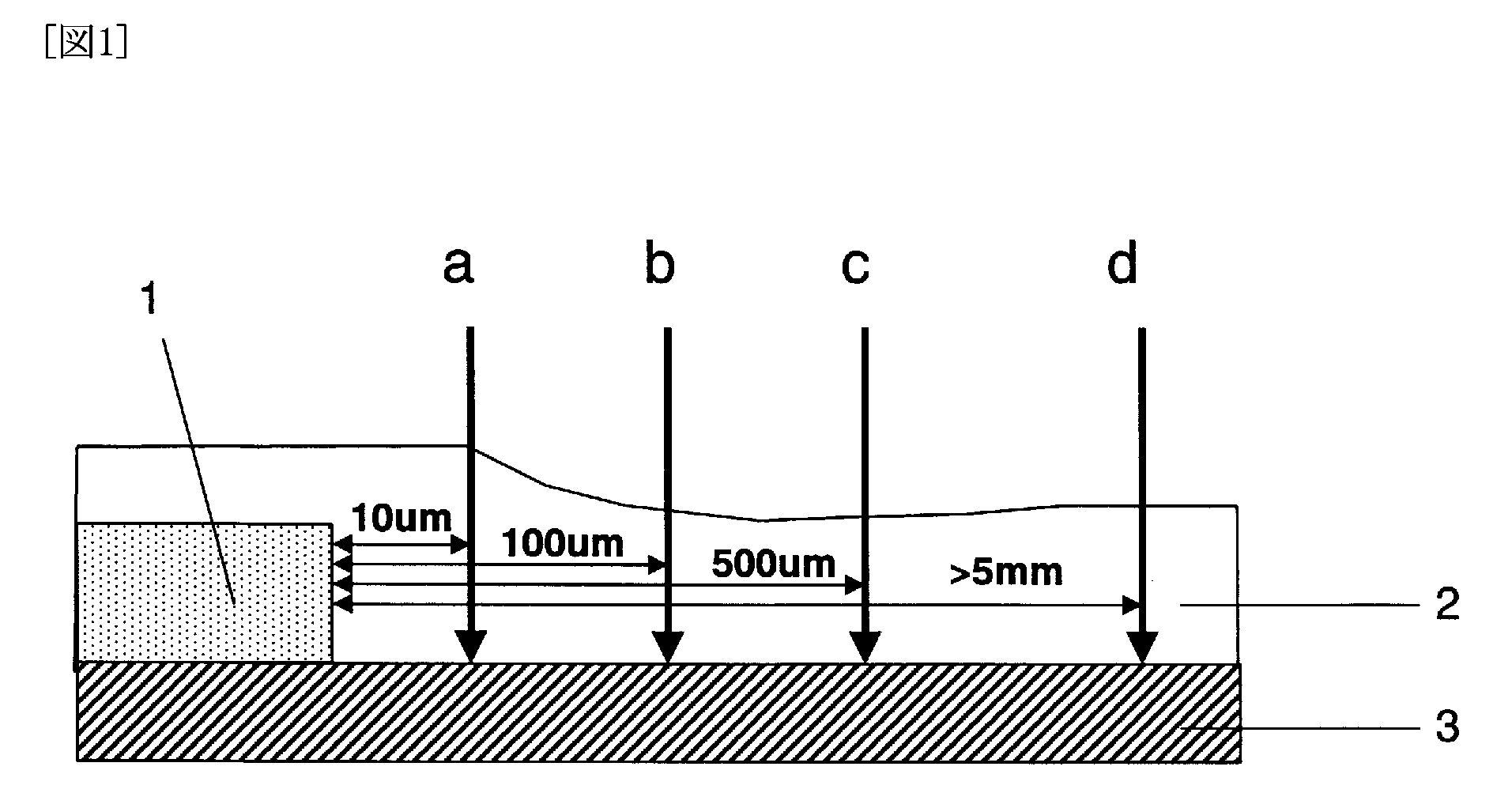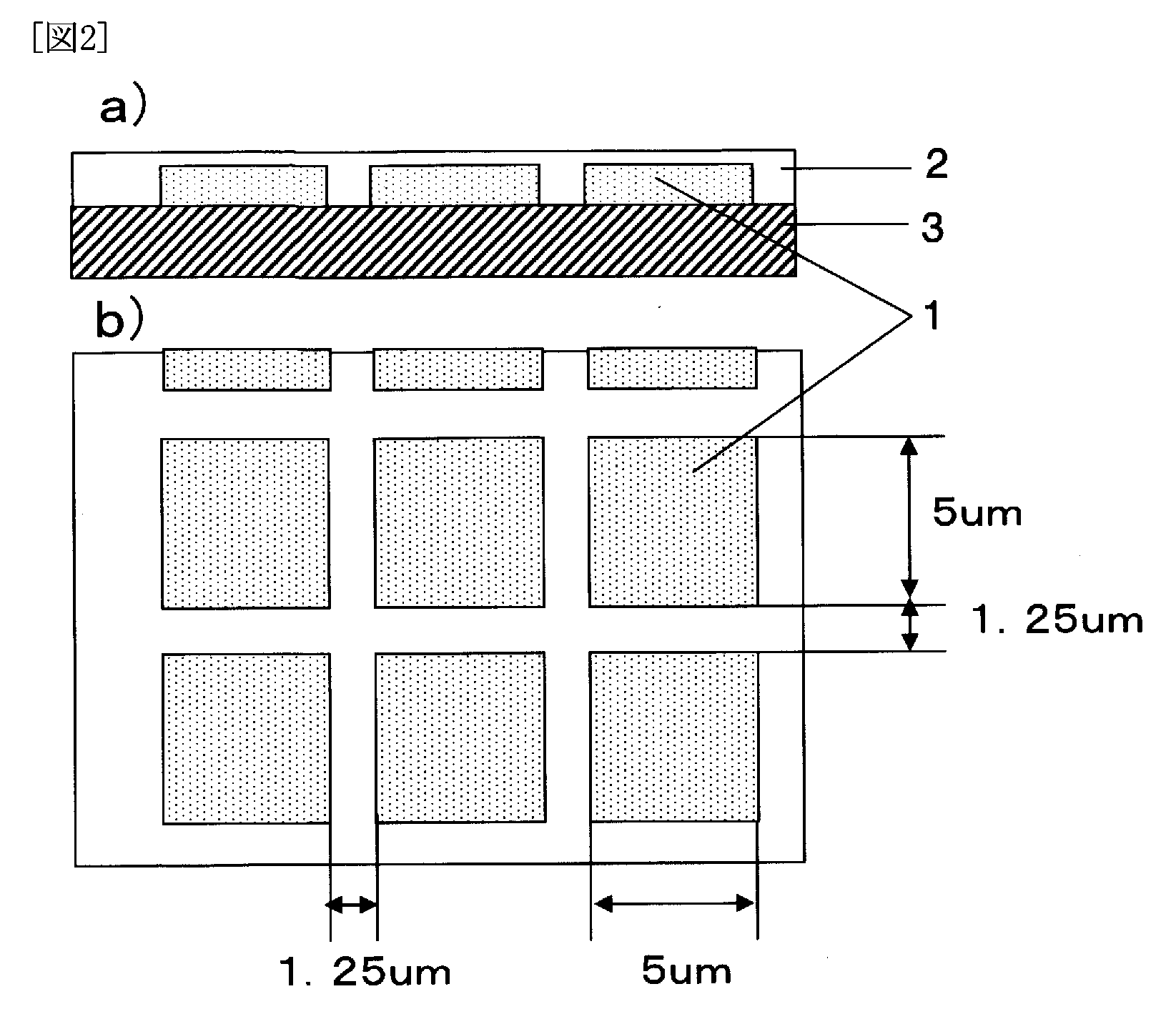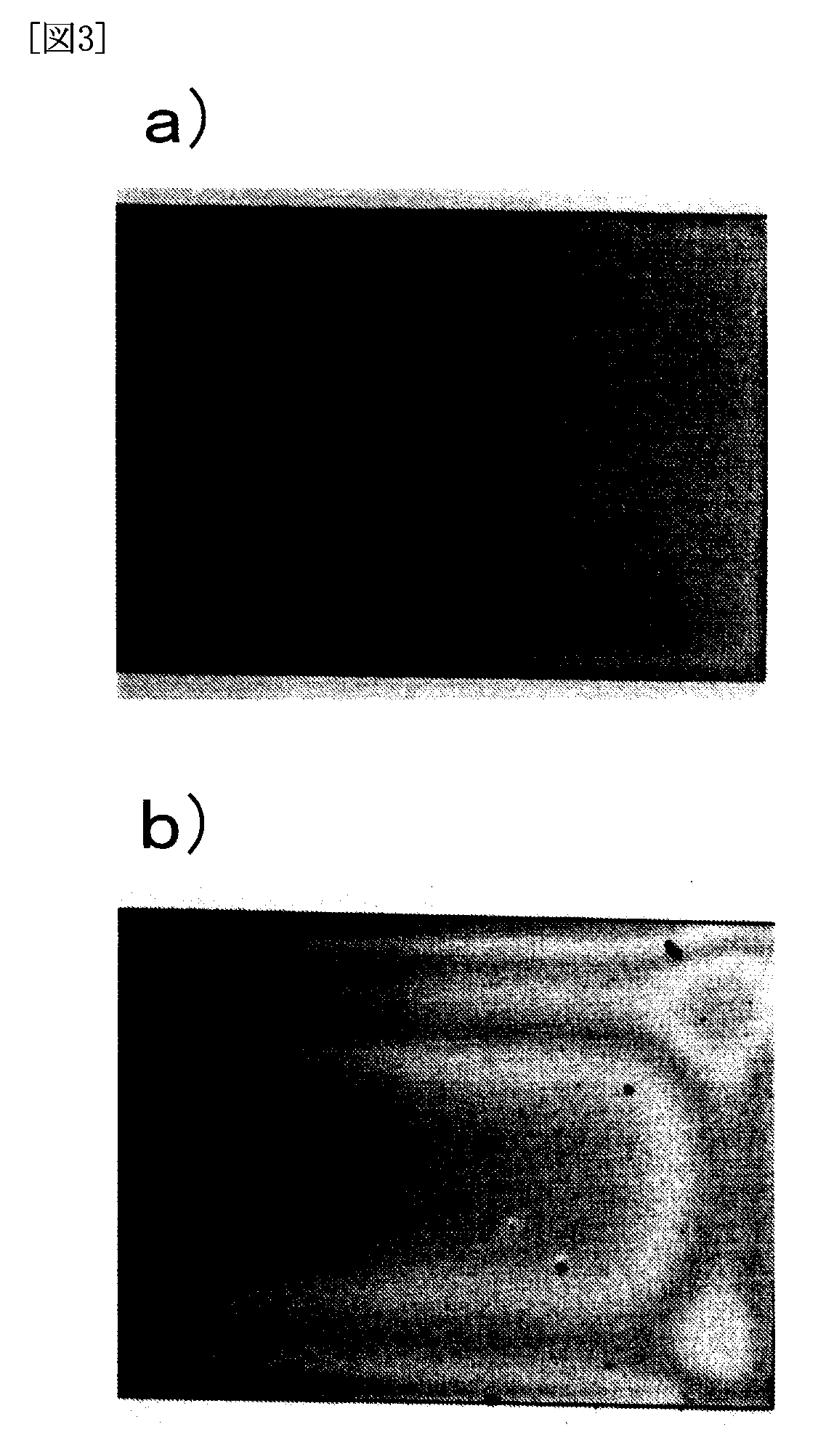Siloxane resin composition and production method thereof
a technology of siloxane resin and composition, which is applied in the direction of instruments, photomechanical devices, coatings, etc., can solve the problems of insufficient capacity to wet the substrate and cover the level of the resin composition, and no good planarization film satisfactory in both the properties
- Summary
- Abstract
- Description
- Claims
- Application Information
AI Technical Summary
Benefits of technology
Problems solved by technology
Method used
Image
Examples
synthesis example 1
Synthesis of a Quinonediazide Compound
[0097]In a dry nitrogen stream, 21.22 g (0.05 mole) of Tris P-PA (trade name, produced by Honshu Chemical Industry Co., Ltd.) and 26.8 g (0.1 mole) of 5-naphthoquinonediazidesulfonic acid chloride (NAC-5 produced by Toyo Gosei Kogyo K.K.) were dissolved into 450 g of 1,4-dioxane, and the mixture was kept at room temperature. To the mixture, a mixture consisting of 50 g of 1,4-dioxane and 12.65 g of triethylamine was added dropwise to ensure that the temperature in the system did not exceed 35° C. After completion of dropwise addition, the mixture was stirred at 40° C. for 2 hours. The triethylamine salt was filtered away, and the filtrate was added into water. Subsequently the precipitate was collected by filtration and washed with 1 liter of 1% hydrochloric acid aqueous solution. Then, it was washed further with 2 liters of water twice. The precipitate was dried using a vacuum dryer, to obtain the quinonediazide compound represented by the foll...
working example 1
[0098]A reaction vessel was charged with 20.4 g (0.15 mol) of methyltrimethoxysilane, 69.4 g (0.35 mol) of phenyltrimethoxysilane and 190 g of 1-ethoxy-2-propanol, and into the solution, 30.6 g of water and 0.48 g of phosphoric acid were added dropwise with stirring to ensure that the reaction temperature did not exceed 40° C. After completion of dropwise addition, a distillation device was attached to the flask, and the obtained solution was heated and stirred at a bath temperature of 105° C. for 2.5 hours, to perform a reaction while the methanol produced by hydrolysis was distilled away. Then, the solution was further heated and stirred at a bath temperature of 130° C. for 2 hours and cooled to room temperature, to obtain polymer solution A (solid content 33 wt %).
[0099]Twenty grams of the obtained polymer solution A was taken, and 30 g of 1-t-butoxy-2-propanol was added to it for dilution, to obtain resin composition 1.
[0100]A silicon substrate with a level difference as describ...
working example 2
[0101]Hydrolysis and condensation were performed as described in Working Example 1, except that 1-t-butoxy-2-propanol was used instead of 1-ethoxy-2-propanol, to obtain polymer solution B (solid content 30 wt %). Twenty grams of the obtained polymer solution B was taken, and 30 g of 1-t-butoxy-2-propanol was added to it for dilution, to obtain resin composition 2. The obtained resin composition 2 was used for evaluation as described in Working Example 1.
PUM
| Property | Measurement | Unit |
|---|---|---|
| refractive index | aaaaa | aaaaa |
| distance | aaaaa | aaaaa |
| wt % | aaaaa | aaaaa |
Abstract
Description
Claims
Application Information
 Login to View More
Login to View More - R&D
- Intellectual Property
- Life Sciences
- Materials
- Tech Scout
- Unparalleled Data Quality
- Higher Quality Content
- 60% Fewer Hallucinations
Browse by: Latest US Patents, China's latest patents, Technical Efficacy Thesaurus, Application Domain, Technology Topic, Popular Technical Reports.
© 2025 PatSnap. All rights reserved.Legal|Privacy policy|Modern Slavery Act Transparency Statement|Sitemap|About US| Contact US: help@patsnap.com



